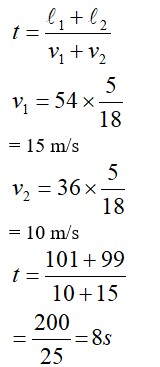A ball is bouncing elastically with a speed 1 m/s between walls of a railway compartment of size 10 m in a direction perpendicular to walls. The train is moving at a constant velocity of 10 m/s parallel to the direction of motion of the ball. As seen from the ground,
(a) The direction of motion of the ball changes every 10 seconds.
(b) Speed of ball changes every 10 seconds.
(c) Average speed of ball over any 20 second interval is fixed.
(d) The acceleration of ball is the same as from the train.
A ball is bouncing elastically with a speed 1 m/s between walls of a railway compartment of size 10 m in a direction perpendicular to walls. The train is moving at a constant velocity of 10 m/s parallel to the direction of motion of the ball. As seen from the ground,
(a) The direction of motion of the ball changes every 10 seconds.
(b) Speed of ball changes every 10 seconds.
(c) Average speed of ball over any 20 second interval is fixed.
(d) The acceleration of ball is the same as from the train.
-
1 Answer
-
This is a multiple choice answer as classified in NCERT Exemplar
(b, c, d) velocity of ball before collision =10+1=11m/s
Speed after collision= 10-1=9m/s
As the speed is changing after travelling 10 m and speed is 1m/s hence, time duration of the changing speed is 10
Since the collision of the ball is perfectly elastic there is no dissipation of energy hence, total momentum and kinetic energy are conserved.
Since the train is moving with constant velocity hence, it will act as inertial frame of reference as that of earth and acceleration will be same in both cases.
As the collision is perfectly elastic so momentum and total energy (K.E and
...more
Similar Questions for you
Please find the solution below:
[h] = ML2T-1
[E] = ML2T-2
[V] = ML2T-2C-1
[P] = MLT-1
According to question, we can write
10 =
Average speed
(d) Initial velocity
Final velocity
Change in velocity
Momentum gain is along
Force experienced is along
Force experienced is in North-East direction.
Taking an Exam? Selecting a College?
Get authentic answers from experts, students and alumni that you won't find anywhere else
Sign Up on ShikshaOn Shiksha, get access to
- 66k Colleges
- 1.2k Exams
- 680k Reviews
- 1800k Answers



